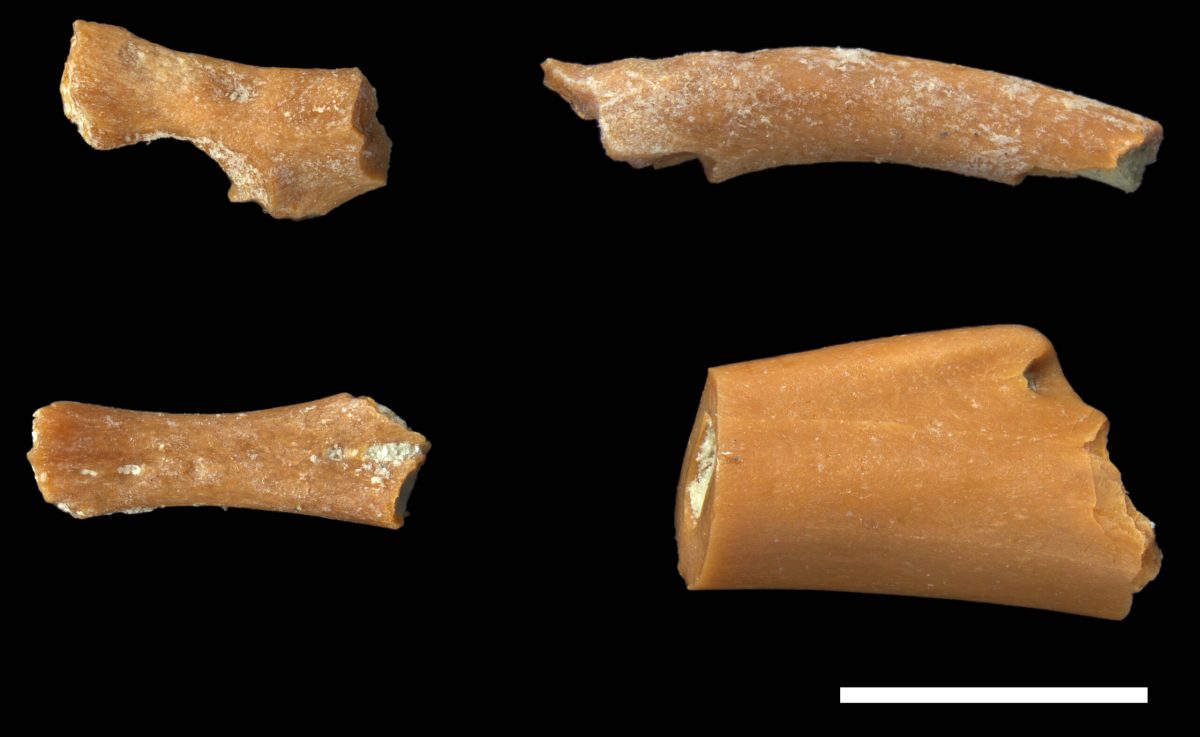In the bowels of the Museum of New Zealand Te Papa Tongarewa, the little frog waited. In 2005 scientists had released its bones from its sediment tomb on the banks of the Waipara River in North Canterbury.
The discoverers – Bruce Marshall, Phil Maxwell, and Al Mannering – had carefully collected the tiny bones that remained and deposited them in the museum where they were identified as belonging to a frog before they were gently packed away. There the little frog waited like a heirloom toy waiting for the next generation of scientists to rediscover and treasure it.
A few years later the lid was lifted on the little frogs’ new home. Its bones were carefully taken from its box and placed under the microscope. Every bump and groove was described in detail and compared to other frogs from around Aotearoa New Zealand.
Convinced they had discovered something new, the researchers including Luke Easton from the Department of Conservation, Alan Tennyson from Te Papa, and myself, decided to gift the little frog a name: Bishop’s frog (Leiopelma bishopi) named after another one-of-a-kind in the frog world, New Zealand’s frogman, the late Professor Phil Bishop who sadly passed away earlier this year, in honour of his services to frog conservation.

Phil was passionate about New Zealand’s unique frogs. He was a walking frog encyclopaedia, rattling off their scientific names without hesitation, where in the world they lived, and all their weird and wonderful behaviours. The frogman was immensely proud of the species of South African mistbelt moss frog Anhydrophyrne ngongoniensis he had described, and would excitedly show people a photo of the frog. To frogs, Phil was their David Attenborough or Gerald Durrell.
With the discovery of Bishop’s frog from the depths of a Dark Age in frog evolution in Aotearoa, its story can finally be told.
New Zealand’s ancient Leiopelma frogs are known from three relictual endangered species, Archey’s, Hochstetter’s, and Hamilton’s frogs, and a handful of recently extinct species that include Markham’s, Waitomo, and Aurora frogs – indeed, Phil would show anyone who was interested the subfossil bones of Markham’s frog he had in his office. The fossil bones of Aotearoa’s recent frogs, dating back 20,000 years to the height of the last Ice Age, have been found throughout wet, forested areas of the North Island, and western and southern areas of the South Island.
The only other Leiopelma fossils known to palaeontologists date back to that Miocene wonderland of St Bathans 16-19 million years ago, where fragmentary remains have been attributed to two different species.
Bishop’s frog lived in a world that to us would have been somewhat alien. North Canterbury 3.7-2.4 million years ago was warm, wet, and humid, dominated by kahikatea and rimu forest. Not the hot, dry, and dusty landscape I associate with it now from fossil excavations and road trips as a kid through the Lewis Pass to visit my grandparents.
Preserved in lake sediments from this ancient world were the bones of Bishop’s frog and another much larger Leiopelma frog (though its story will need to wait until more bones are found). When my PhD student Luke Easton examined the tiny frog bones in the basement of Te Papa, he knew he’d stumbled upon something old, something new. Having spent weeks pouring over the minutiae of hundreds of frog bones, he knew the shape of each bone and how they differed between different frogs like the back of his hand.
Bishop’s frog didn’t look like anything he had seen before. Fittingly as Phil was one of the fathers of New Zealand frog research, Bishop’s frog can be thought of as the forefather (or direct ancestor if you will) of all living and recently extinct frogs in New Zealand.

So why did our little frog go extinct? At the time Bishop’s frog lived, continual uplift of the South Island’s Southern Alps (think the Misty Mountains out of Lord of the Rings) created a rain shadow in eastern areas Bishop’s frog called home. Cooling associated with that long, dark winter of the Pleistocene Ice Ages resulted in Bishop’s frog home becoming arid….not the wet forested paradise it was used to. The forests that cloaked the area became fragmented and retreated to refugia. It’s likely Bishop’s frog home was completely lost to the mists of time, and sadly Bishop’s frog with it.
Despite its loss, Bishop’s frog has told us a lot about frog evolution in New Zealand and the impact climate change, both natural and human-driven, can have on isolated island ecosystems.
So, here’s to you Phil, and our little frog. From small beginnings, you have both left big legacy’s. It only seems fitting that you have both been immortalised as a one-of-a-kind frog with a rich story to tell.

